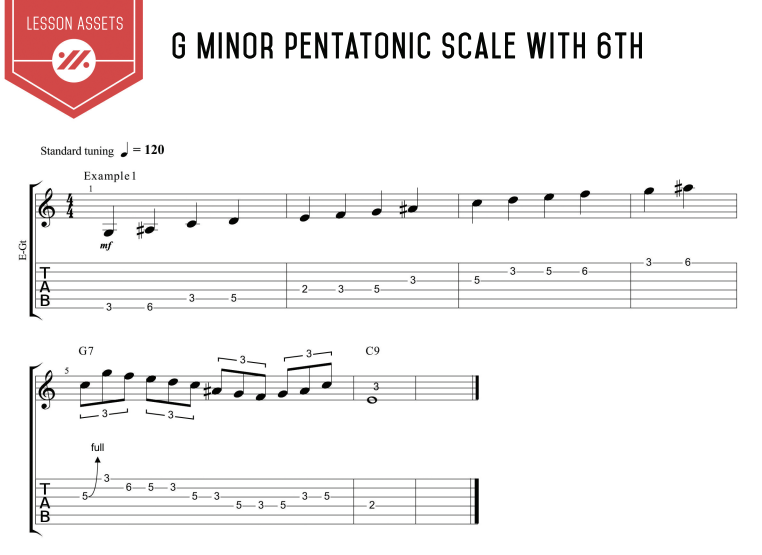
When looking for new licks or ideas, I think the best place to start is with what you already know.
Feeling like you have to learn a whole new thing can be daunting, but just feeling like you are taking something you know and modifying it a bit seems more manageable.
So with that in mind, let’s look at our old friend (and/or nemesis) the minor pentatonic scale. I often hear students say they are bored with the pentatonics and need to learn “new scales.” Before we jump completely to the new scale scenario, let’s take the minor pentatonic and see what additional notes we can drop in there.
For this lick we are going to add the Major 6th to the minor pentatonic scale. The minor pentatonic is of course built from the 1, b3, 4, 5, and b7. Sometimes we can actually replace the b7 with the 6 – but in this case we are just adding the 6 and keeping the b7 in there. Why this Major 6th is so killer when used in a blues over the IV chord is because it is also the Major 3rd of the IV chord! Confusing? Not really, lets take a look.
This lick is using our G minor pentatonic scale consisting of the notes G, Bb, C, D, and F. Then we add the Major 6th in there which is the E note. When we go to the IV chord in a G blues, C9, that chord has the notes C, E, G, Bb, and D in it. So you can see that the E note is that Major 6th we added to the G minor pentatonic scale. This note works over the G chord as well – but is especially poignant when played as the chords change to the C9 because it becomes the sweet sounding Major 3rd of the C9 making the lick very melodic.
The first example is just the G minor pentatonic scale with the 6th added in. Then in the lick example, you can start on the downbeat of the I chord (G7), and you will end the lick with the last note on the downbeat of the IV chord (C9) giving you that chord’s Major 3rd.
Play this lick slowly and then gradually speed it up, and eventually move it to different spots on the neck. This is where really knowing your fretboard is a huge help as you don’t have to learn a bunch of different patterns, you just need to know the regular G minor pentatonic and then know where the E notes are around that to add in the 6th. Have fun with this one – you can really create some interesting sounds with it!
Tab for this Guitar Lesson



